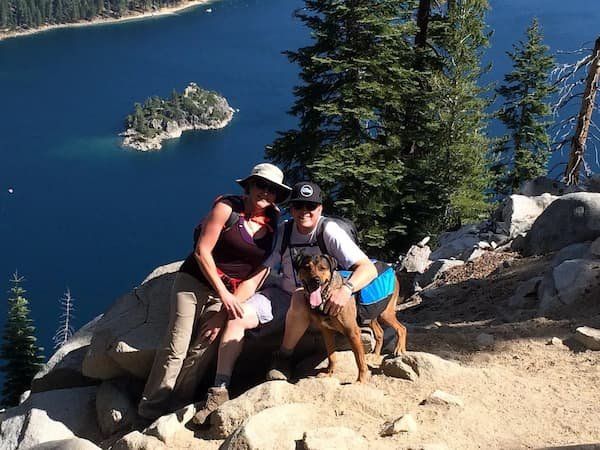When Gunther, now 12, was younger, we would hike the highest elevations (think Maggies Peaks or Mt Tallac) and we would have a doggie backpack on him with a liter (of his own water) packed on either side to slow him down.
This would not stop him from going several miles to our one→ chasing squirrels, smelling all the smells and navigating the landscape.
As a 100 pound dog, he had both hind knees undergo ACL surgery, which we knew would slow him down. And of course, unlimited stick throwing into our favorite lake decreased proportionately with his age…
This transition can be heart-wrenching for devoted pet parents, but it's also an opportunity to deepen your bond and ensure your loyal friend's comfort. Goes without saying: Consulting your vet is of the utmost importance.
Let's explore five expanded strategies to support your aging active dog, backed by expert insights:
1. Adapt Your Exercise Routine
The days of marathon hikes or him barking for the umpteenth stick to be thrown, might be in the rearview mirror, but that doesn't mean physical activity should cease.



